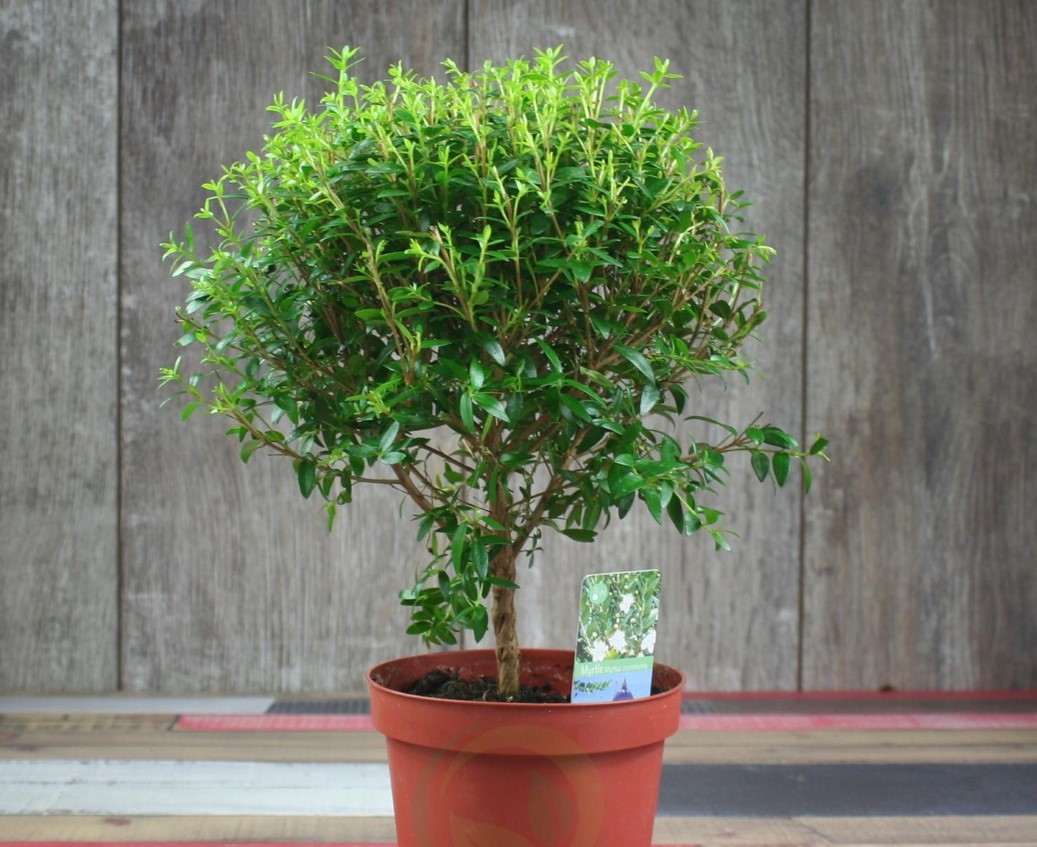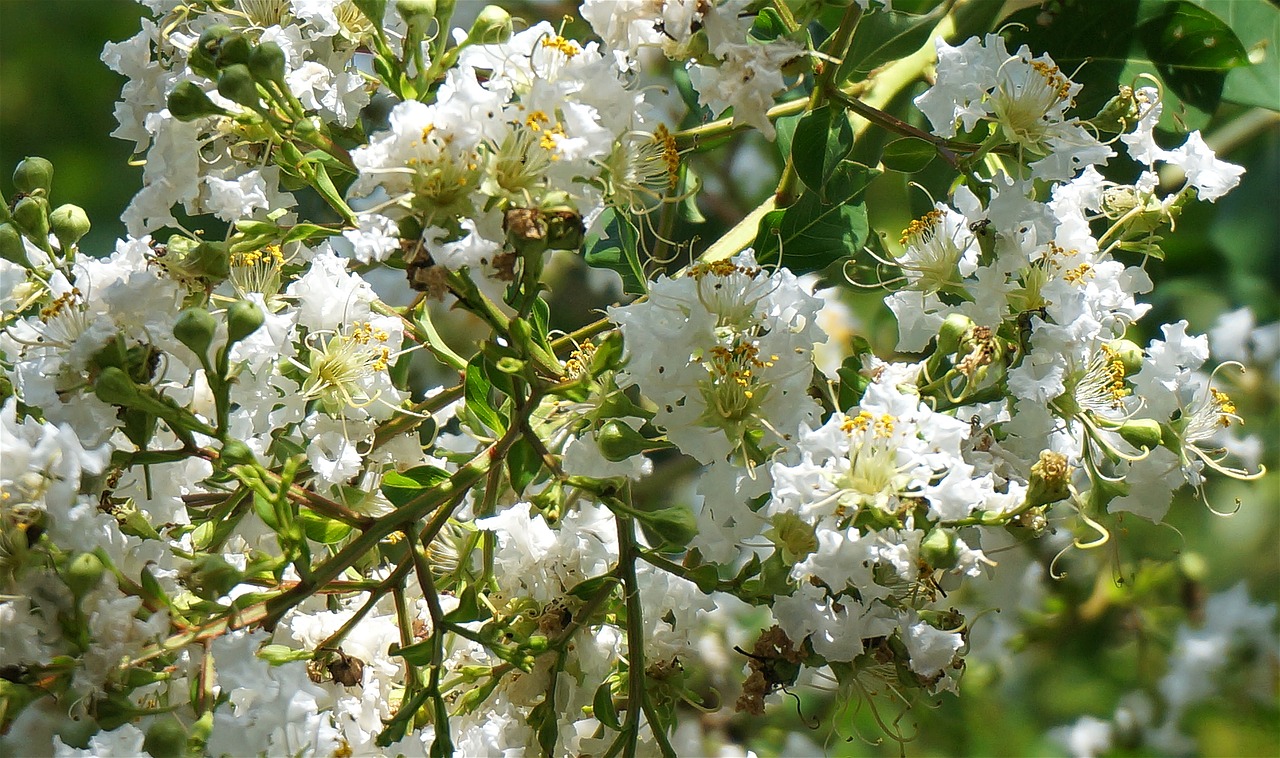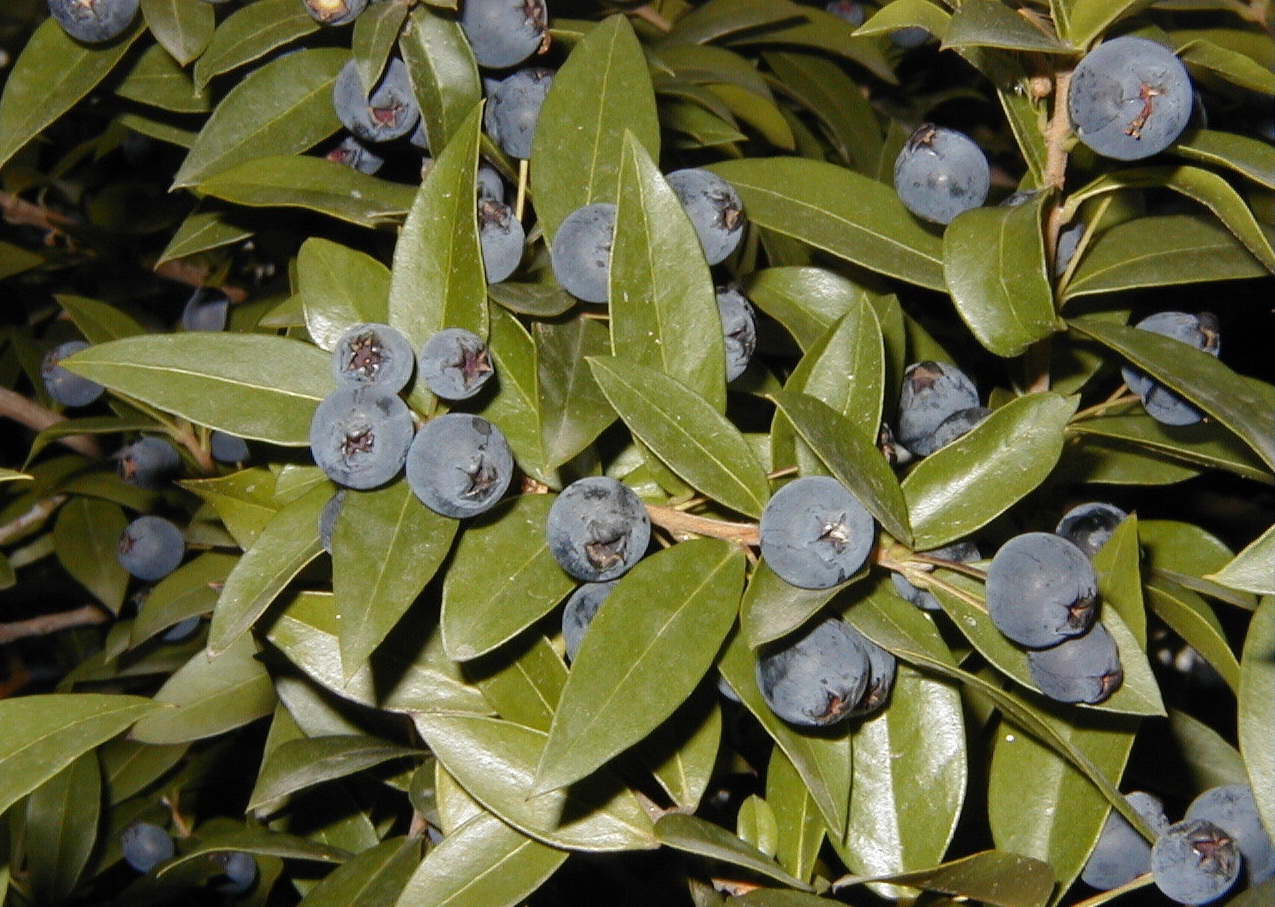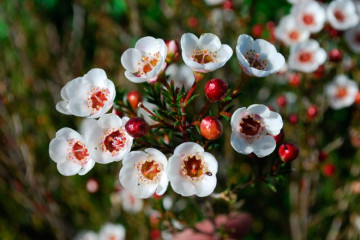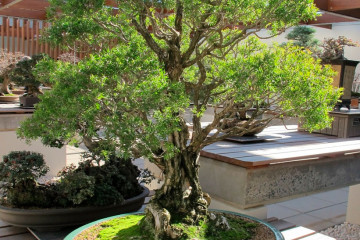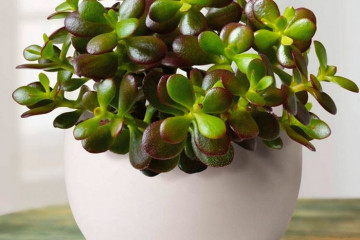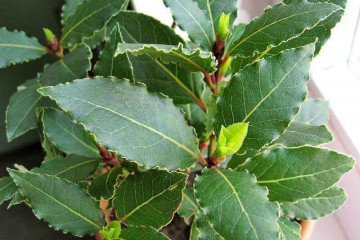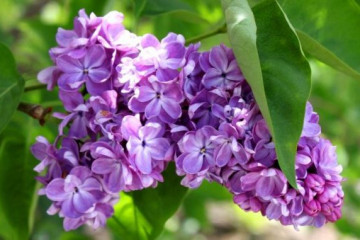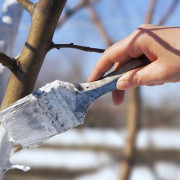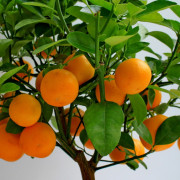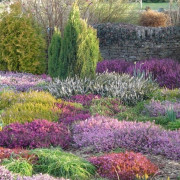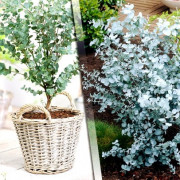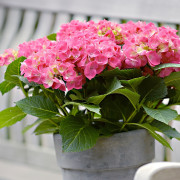Myrtle tree - home care
Content:
German brides decorate themselves with myrtle wreaths on the day of the celebration, it is believed that this will help make family life harmonious and happy. In addition, this amazing plant has a lot of useful properties. Anyone who has minimal skills in caring for green pets can grow it on their windowsill.
Short description
In the wild, the myrtle tree grows in the Mediterranean, it is found in Italy, France, Spain. It prefers a warm mild climate with short winters, therefore in Russia it is most often cultivated as a house plant.
A member of the Myrtle family can be a shrub or a short tree. The trunk height is up to 0.7 meters, but in the natural environment it grows up to 5 meters.
Features of myrtle:
- An evergreen look.
- The leaves are rich green, with tiny veins. They are rich in essential oils, therefore they emit an amazing aroma.
- The flowers are small, white. Collected in inflorescences or single.
- Round fruits of myrtle with a deep blue hue. The seeds inside can be used for propagation.
Popular varieties and types
In nature, there are more than 30 varieties of myrtle, many of them are quite decorative, grown in greenhouses and greenhouses. But some are suitable for a flower garden in the house.
The simplest is considered ordinary myrtle, attractive, but undemanding to care. You can also plant the following varieties in your apartment:
- Kassandra (marsh variety of myrtle), height up to one meter. Suitable for responsible flower growers without children and pets, as it is poisonous.
- Hymen. It is considered the patron saint of newlyweds.
- Communis. An ornamental variety with snow-white fragrant flowers.
- Variegated. A beautiful elegant plant with a bright color of leaves.
- Citric. Has a subtle, unobtrusive citrus aroma.
- Alhambra. Blooming with tiny white flowers occurs in the spring.
- Large-leaved. Known for its ability to kill bacteria. Purifies the air, the leaves of this myrtle are used as raw materials in alternative medicine.
Any of these varieties of the southern plant can be grown independently.
Myrtle tree: home care
Potted myrtle will feel great if the conditions are right. Here are the basic requirements for the correct placement:
- Lighting is sufficient, but from the direct best sun the flower should be fenced with openwork shading.
- It is important to protect the myrtle tree from drafts, but the influx of fresh air will benefit it.
Temperature requirements
A visitor from southern countries needs a warm climate. In winter, it is enough to maintain the temperature up to 11 degrees, since the plant is dormant.In summer, for normal growth and flowering stimulation, the permissible parameter is +23 .. + 25 degrees.
Humidity and watering
Myrtle is a moisture-loving culture, the tree should be watered regularly. In the summer, it is important not to allow the soil to dry out. The plant reacts well to spraying from a spray bottle.
In winter, water is rarely watered, 1-2 times a month, as the soil dries up. The plant is not recommended to be planted in a pot with automatic watering, it is demanding on humidity, so it is better to keep the process under control.
Feeding
Here's what to feed myrtle with:
- in the summer, use mineral complexes for flowering 2 times a month;
- for flowering - phosphorus compounds;
- for growth - nitrogen-containing preparations.
No fertilization is done in winter.
Flowering period
Caring for a myrtle tree during flowering is quite simple. Key recommendations:
- Provide the flower with good lighting and fresh air. You can put the pot on the balcony, protecting it from sunburn.
- Phosphorous preparations will prolong flowering and increase its splendor.
- The frequency of irrigation and spraying is increasing.
Rest time and preparation for winter
Special conditions are created for the plant: temperature - +9 .. + 11 degrees, the place should be bright. Watering is reduced to 1-2 times a month and only when the soil is dry. Fertilizing the flower is not required. The decrease in temperature and moisture is not carried out abruptly, but gradually, in order to prevent unnecessary stress for the plant.
Trimming
In order for the myrtle tree to look neat, it is important to prune - the formation of the crown. The time for the procedure is spring or autumn, after flowering is complete. Here are instructions on how to form myrtle:
- Trimming the top will give the crown a fan shape.
- You need to trim the side shoots to achieve the desired level of splendor.
You should not get carried away, a very small number of side branches is the reason for poor flowering. Flower buds simply have nothing to form on.
Transplantation
It is possible to "move" myrtle into a new pot for the following reasons:
- A new plant just purchased from the store. A flower grower cannot be sure of the quality and safety of the soil, so it is not worth the risk.
- If the tree has grown and it becomes cramped in the pot.
- When waterlogging the soil. If not transplanted, the roots will rot and the myrtle will die.
Soil selection
The key to the successful cultivation of an indoor tree is good land for myrtle: what kind of soil is needed, experienced florists have already established. The soil needs sour, fertile. It is allowed to buy a ready-made substrate or mix it yourself. An example of a composition: turf, humus, peat and sand in a ratio of 2: 2: 1: 1. Perlite, brick chips, small pebbles are suitable for the drainage layer.
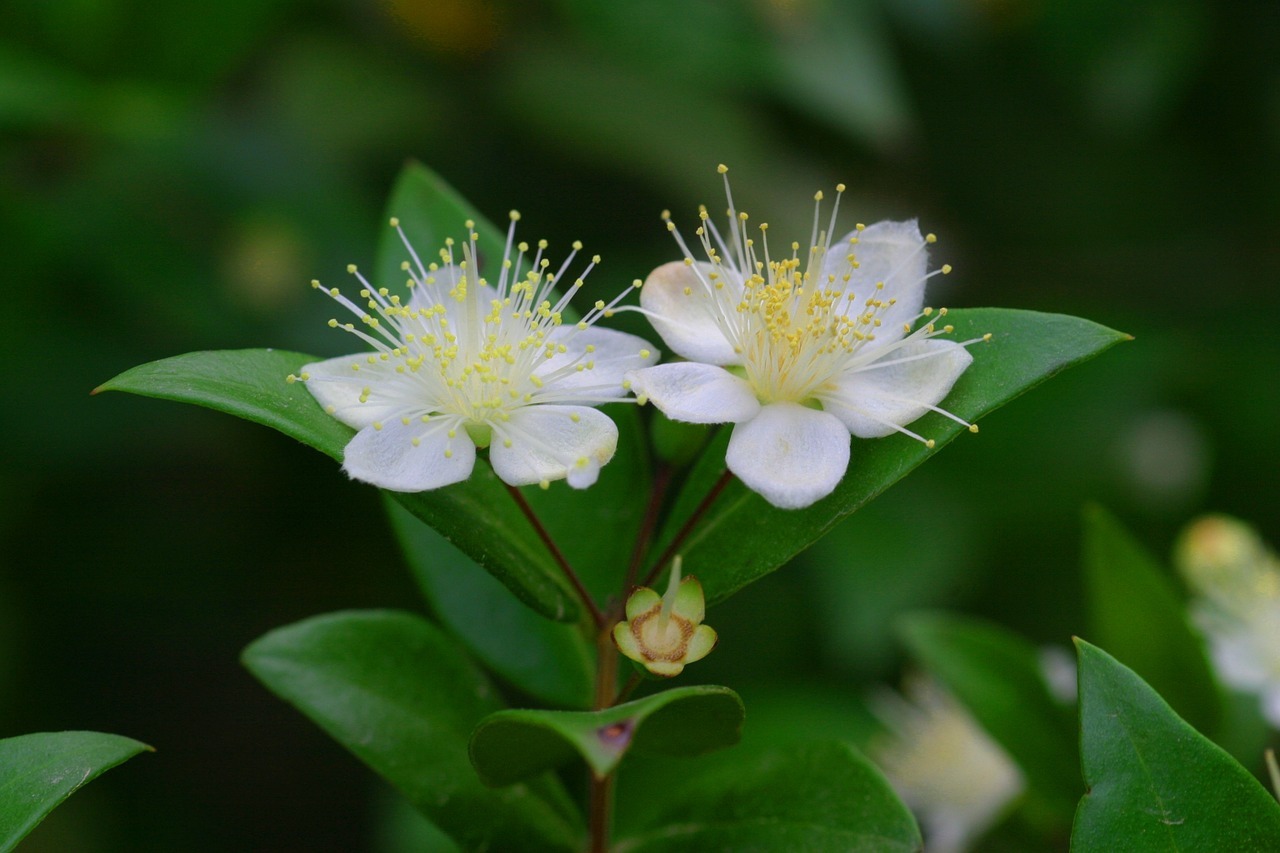
If you do not forget about the rules for transplanting, then the plant will certainly thank you with graceful flowers with a delicate aroma.
Pot requirements
Myrtle at home will feel comfortable in a small pot. Its diameter should be sufficient to accommodate the root system, but not large. The material can be anything, but a myrtle tree in a clay pot will look most impressive.
Instructions
Here is a step-by-step description of the transplant process:
- Water the plant per day.
- Gently reach the tree by holding the trunk and supporting the crown.
- Try to clear the roots from the ground, straighten, remove the damaged ones.
- Pour drainage into the pot, then - the substrate.
- Place the seedling in the center of the container.
- Sprinkle with soil.
- Tamp down carefully.
- Irrigate abundantly.
Breeding options
Two popular methods are used - seed and cuttings.
Seeds
Quite a long and laborious way. The seeds are placed in a container with a substrate consisting of equal parts of sand and peat. Water abundantly. Sprinkle on top with the same soil mixture, then cover with glass.
The container with the seeds is placed in a cool place (the temperature is not higher than +18 degrees). Air every day, watered as needed.
Cuttings
A more popular method among florists. Cuttings are prepared in late winter or mid-summer. Young cuttings are cut from the mother plant to a length of 7-19 cm, the leaves are removed.
They are treated with Epin, planted in the soil and moistened. To create a greenhouse effect, cover with a PET bottle on top. After 3 weeks, rooting will take place.
Popular diseases and pests
Indoor myrtle is unpretentious, but some diseases and insects can bring harm to the plant. It is important to notice the problem in time and take action.
The foliage begins to dry out and fall off when there is a lack of light, a violation of the irrigation schedule, poor soil, and a deficiency of nitrogen in its composition. It is necessary to properly care for the tree and this problem can be easily avoided. With excessive light, the leaves turn yellow and lose their gloss.
The main pests: aphids, worms, scale insects, thrips. They are removed manually, if there are a lot of insects, insecticides are used. For prophylaxis, the leaves are powdered with tobacco crumbs.
Such is the fragrant myrtle that feels great in city apartments. Those who are engaged in the cultivation of this guest from the Mediterranean, note that the air in the room becomes cleaner, and infectious diseases visit the family much less often.

